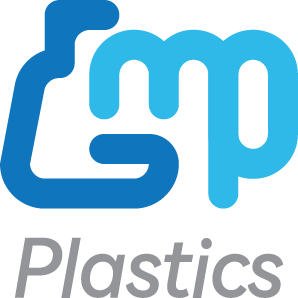Erlenmeyer flasks are a fundamental piece of laboratory equipment used in various scientific applications, from microbiology to chemistry and biotechnology. Traditionally, these flasks have been made of borosilicate glass, but with the advancement of polymer technology, plastic alternatives have gained popularity. Among the most commonly used plastic materials for Erlenmeyer flasks are PETG (Polyethylene Terephthalate Glycol) and PC (Polycarbonate). Each material has unique properties that make it suitable for different laboratory environments and applications. This article will explore the differences between PETG and PC Erlenmeyer flasks, analyzing their chemical properties, durability, applications, cost, and more.
1. Material Composition and Chemical Properties
PETG (Polyethylene Terephthalate Glycol)
PETG is a thermoplastic polymer that belongs to the polyester family. It is modified with glycol to enhance its clarity, impact resistance, and flexibility. The glycol modification prevents crystallization, making PETG easier to process and less brittle than standard PET.
Key Properties of PETG:
-
High transparency
-
Good chemical resistance to acids, bases, and alcohols
-
Impact-resistant and durable
-
Moderate heat resistance (maximum working temperature ~70°C to 80°C)
-
Low water absorption
-
Resistant to sterilization via gamma radiation and ethylene oxide (EtO)
PC (Polycarbonate)
Polycarbonate is a high-performance thermoplastic known for its exceptional strength, transparency, and heat resistance. It is often used in applications that require durability and repeated sterilization.
Key Properties of PC:
-
High optical clarity
-
Excellent impact resistance (virtually unbreakable)
-
High heat resistance (maximum working temperature ~120°C to 140°C)
-
Good chemical resistance, but sensitive to strong acids and bases
-
Can be autoclaved for sterilization (limited cycles due to potential degradation)
-
UV-resistant
2. Durability and Mechanical Strength
Durability is a crucial factor in choosing an Erlenmeyer flask, especially for applications requiring repeated use and exposure to different environmental conditions.
-
PETG Flasks: PETG is strong but not as impact-resistant as polycarbonate. It can withstand moderate mechanical stress but may crack or warp under extreme conditions. However, it resists shattering better than glass.
-
PC Flasks: Polycarbonate is known for its high impact resistance and is virtually unbreakable. It can withstand rough handling, making it ideal for high-stress environments.
3. Heat Resistance and Sterilization
The ability to withstand high temperatures and sterilization methods is another critical distinction between PETG and PC Erlenmeyer flasks.
-
PETG Flasks: PETG has moderate heat resistance and should not be exposed to temperatures above 80°C for prolonged periods. It cannot be autoclaved but is compatible with gamma radiation and ethylene oxide sterilization methods.
-
PC Flasks: Polycarbonate has a high heat tolerance and can be autoclaved multiple times. However, repeated autoclaving may cause degradation, leading to yellowing and loss of mechanical strength over time.
4. Chemical Resistance
Both PETG and PC flasks offer chemical resistance, but their performance varies depending on the type of chemicals used.
-
PETG Flasks: PETG is resistant to mild acids, alcohols, and dilute bases but can degrade when exposed to strong acids, ketones, and some solvents.
-
PC Flasks: Polycarbonate has good resistance to diluted acids and alcohols but is vulnerable to strong acids, bases, and organic solvents such as acetone and benzene.
5. Transparency and Optical Clarity
Optical clarity is essential in laboratory settings where visual monitoring of liquid contents is necessary.
-
PETG Flasks: PETG is highly transparent and retains clarity over time, making it suitable for applications requiring visual assessment.
-
PC Flasks: Polycarbonate also offers excellent clarity but may yellow slightly with age or repeated autoclaving.
6. Applications in Laboratory Settings
The choice between PETG and PC Erlenmeyer flasks depends on the specific application and the conditions under which they will be used.
PETG Flasks Are Ideal For:
-
Single-use or short-term applications
-
Cell culture and media storage
-
Cold storage applications
-
Laboratories that use gamma or EtO sterilization
-
Applications requiring high optical clarity with moderate chemical resistance
PC Flasks Are Ideal For:
-
Reusable laboratory applications
-
High-temperature experiments
-
Autoclave sterilization procedures
-
Bioreactors and fermentation setups
-
Environments requiring high impact resistance
7. Cost and Economic Considerations
Cost is a significant factor when selecting laboratory equipment. PETG and PC Erlenmeyer flasks differ in pricing due to their properties and longevity.
-
PETG Flasks: Generally more affordable than polycarbonate flasks. However, they are typically intended for single-use or short-term applications, which can increase long-term costs.
-
PC Flasks: More expensive initially, but their reusability makes them cost-effective in laboratories that require repeated use and autoclaving.
8. Environmental Impact and Sustainability
Sustainability is an increasing concern in laboratory settings, and both PETG and PC have environmental considerations.
-
PETG Flasks: PETG is recyclable and has a lower environmental impact compared to polycarbonate. However, single-use PETG contributes to laboratory waste.
-
PC Flasks: While polycarbonate is also recyclable, its longer lifespan reduces waste generation. However, the degradation from repeated autoclaving may eventually require disposal.
9. Choosing the Right Flask for Your Needs
When selecting between PETG and PC Erlenmeyer flasks, consider the following key factors:
-
Temperature requirements: If autoclaving is necessary, PC is the better choice.
-
Chemical compatibility: Ensure the flask material is resistant to the chemicals you’ll be using.
-
Application duration: For single-use applications, PETG may be more economical, whereas PC is preferable for repeated use.
-
Budget constraints: PETG is cost-effective for short-term use, while PC is more durable and reusable.
Conclusion
Both PETG and PC Erlenmeyer flasks have their strengths and are suited for different laboratory needs. PETG flasks provide excellent clarity, moderate chemical resistance, and affordability, making them ideal for single-use applications. In contrast, PC flasks offer superior durability, high heat resistance, and reusability, making them a preferred choice for laboratories requiring repeated sterilization. By understanding the differences in material properties, durability, cost, and environmental impact, laboratories can make informed decisions to optimize their workflows and resources.




